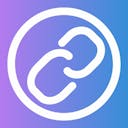Table of Contents
- Introduction
- Understanding Web Content Extraction
- Advanced Extraction Techniques
- APIs and Programmatic Solutions
- Best Practices for Content Integrity
- Handling Different Content Types
- Authentication and Access Challenges
- Organizing Extracted Content
- Conclusion
Introduction
In the digital age, researchers and data analysts face the challenging task of gathering and processing vast amounts of web content. Whether you’re conducting academic research, market analysis, or building a comprehensive knowledge base, the ability to extract web content efficiently while maintaining its integrity is crucial. This guide explores the most effective approaches and tools for clean web content extraction.
Understanding Web Content Extraction
Web content extraction goes beyond simple copy-and-paste operations. It involves systematically collecting structured data from websites while preserving context and metadata. Modern extraction needs to handle dynamic content, JavaScript-rendered pages, and various content protection mechanisms.
The key challenges researchers face include:
- Dealing with inconsistent HTML structures
- Handling dynamic content loading
- Managing rate limits and access restrictions
- Preserving content relationships and context
- Processing multiple content formats
Advanced Extraction Techniques
HTML Parsing
Modern extraction often requires sophisticated HTML parsing techniques. Beautiful Soup and lxml remain popular choices for Python users, but newer approaches like CSS selectors and XPath queries offer more precise extraction capabilities.
Example approaches:
- Semantic HTML analysis
- DOM traversal strategies
- Content fingerprinting
- Pattern-based extraction
- Structure-aware parsing
Browser Automation
For dynamic content, browser automation tools have become indispensable. Selenium and Playwright offer robust solutions for:
- JavaScript-rendered content
- Interactive elements
- Session management
- Multi-step extraction processes
APIs and Programmatic Solutions
RESTful APIs
Many platforms now offer official APIs for content extraction. These provide:
- Structured data access
- Rate limit management
- Authentication handling
- Versioning support
Third-party Solutions
Several specialized services offer content extraction capabilities:
- Diffbot for automatic content classification
- Mercury Parser for article extraction
- Readability parsers for clean text extraction
- Custom API aggregators
Best Practices for Content Integrity
Data Validation
Implement robust validation procedures:
- Schema validation
- Content completeness checks
- Format verification
- Metadata preservation
Error Handling
Develop comprehensive error handling strategies:
- Retry mechanisms
- Rate limit management
- Connection error handling
- Content validation failures
Handling Different Content Types
Articles and Blog Posts
- Focus on main content extraction
- Preserve formatting and structure
- Handle comments and related content
- Extract metadata and author information
Academic Papers
- Parse PDF content accurately
- Extract citations and references
- Maintain formatting integrity
- Handle mathematical notation
Technical Documentation
- Preserve code snippets
- Maintain hierarchical structure
- Extract version information
- Handle cross-references
Authentication and Access Challenges
Managing Access Rights
- Handle login requirements
- Respect robots.txt
- Implement rate limiting
- Use appropriate user agents
Legal Considerations
- Review terms of service
- Document usage rights
- Maintain attribution
- Consider privacy implications
Organizing Extracted Content
Storage Strategies
- Implement structured databases
- Use consistent naming conventions
- Maintain version history
- Create backup procedures
Content Management
- Develop classification systems
- Implement search capabilities
- Create tagging systems
- Build relationship maps
Conclusion
Clean web content extraction requires a balanced approach combining technical expertise with respect for content integrity and access rights. By following these best practices and utilizing appropriate tools, digital researchers can build robust and efficient content extraction systems that maintain the quality and usefulness of the extracted data.
Remember that content extraction is an evolving field. Stay updated with new tools and techniques, and always prioritize the quality and integrity of your extracted data over quantity or speed.

